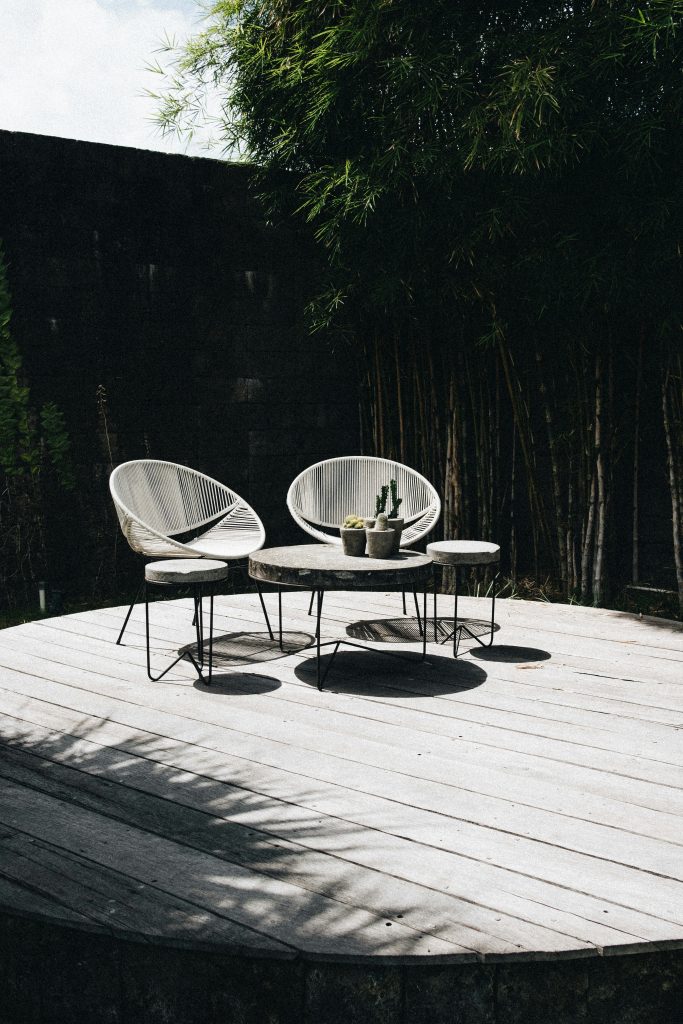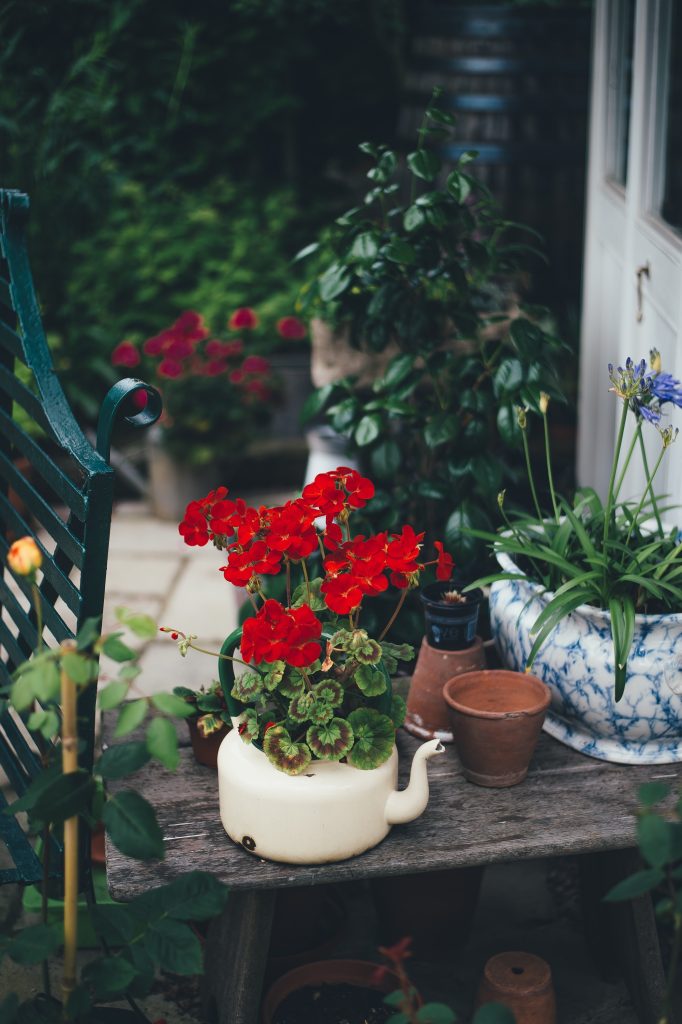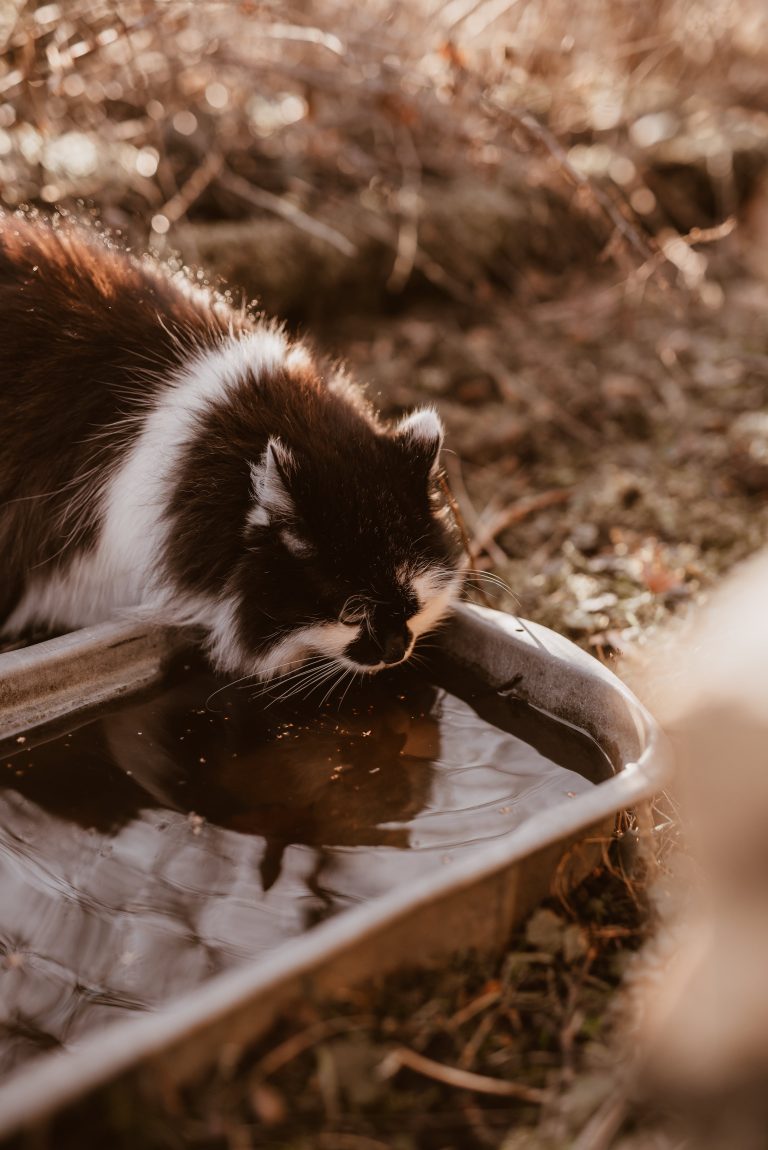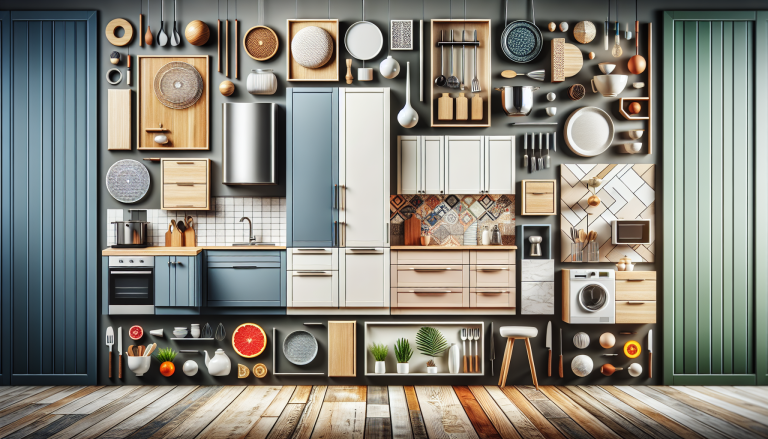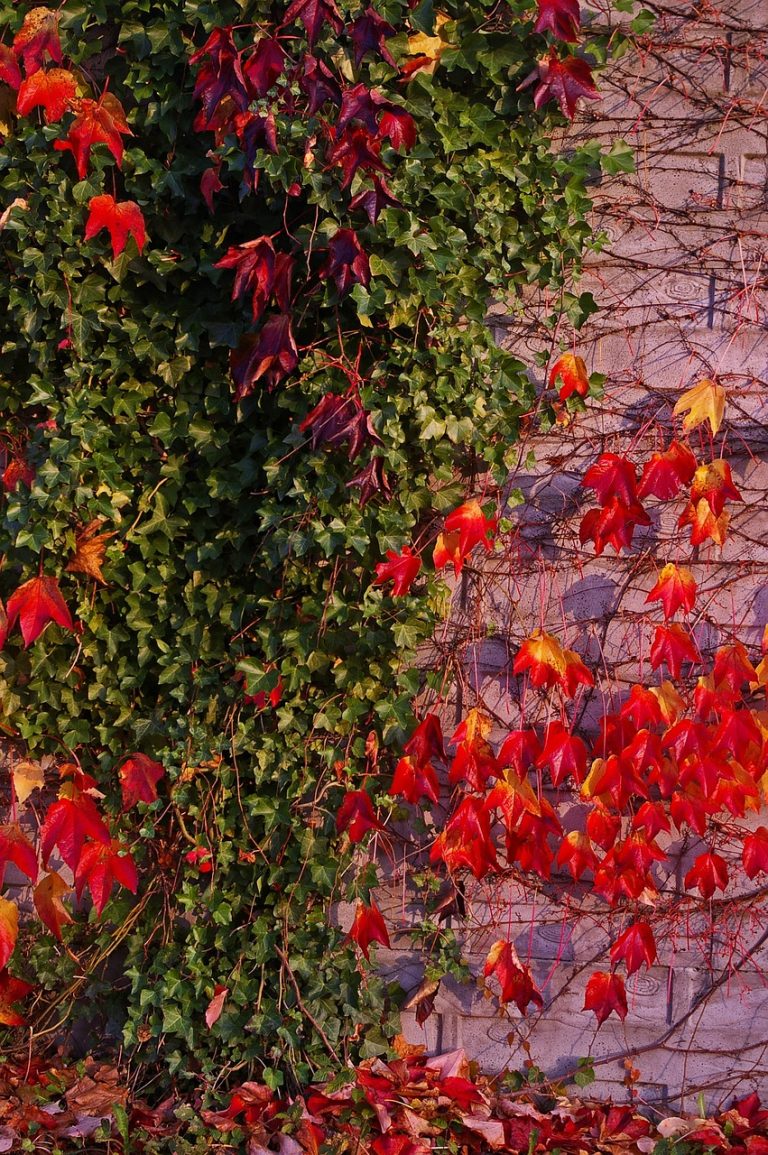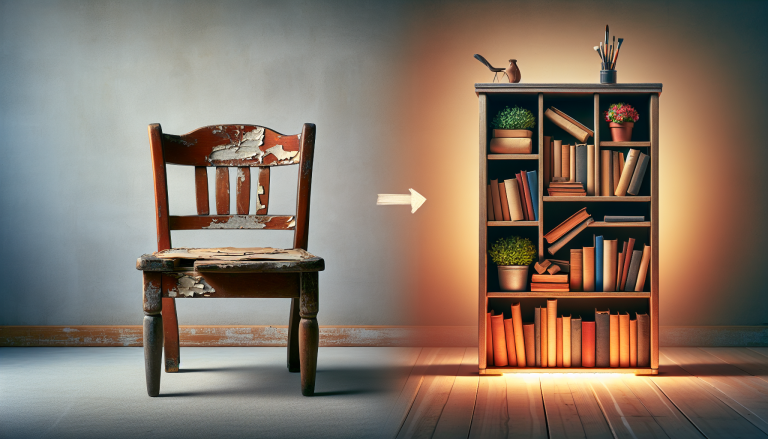Imagine having a lush garden oasis right in your very own backyard, complete with a mesmerizing water feature that adds an element of tranquility and beauty. Designing a garden with a water feature is not only an opportunity to create an inviting outdoor space, but also a chance to enhance the overall aesthetics of your home. In this article, we will explore some key considerations and tips on how you can design a garden with a water feature in the UK, ensuring that you create a captivating and serene sanctuary that delights all who visit.
Table of Contents
ToggleChoosing the Right Water Feature
Considering the Size and Style of the Garden
When it comes to designing a garden with a water feature in the UK, one of the first considerations is the size and style of your garden. A small garden may benefit from a compact water feature such as a tabletop fountain or a wall-mounted waterfall. On the other hand, if you have a larger garden, you have the luxury of options such as ponds, streams, or even a grand waterfall. Consider the scale and proportion of your garden to ensure that the water feature you choose harmonizes with the overall aesthetics.
Determining the Type of Water Feature
Once you have an idea of the size and style of your garden, it’s essential to determine the type of water feature that suits your preferences and the available space. Some popular options include a pond, a water fountain, a waterfall, or a birdbath. Ponds can create a peaceful and serene atmosphere, while water fountains add a touch of elegance and sound to your garden. Waterfalls can provide a dramatic focal point, while birdbaths attract wildlife and add a touch of charm. Consider the ambiance you want to create and how each type of water feature aligns with your vision.
Assessing the Budget and Maintenance Requirements
As with any major addition to your garden, it’s crucial to consider your budget and the maintenance requirements associated with a water feature. The cost of water features can vary significantly depending on the type, size, and materials used, so it’s essential to establish a budget beforehand. Additionally, consider the ongoing maintenance tasks, such as cleaning, filter replacements, and plant care. Some water features may require more frequent maintenance than others, so be sure to choose one that aligns with your available time and resources.
Determining the Location
Considering the Sunlight and Shade
When determining the location for your water feature, take into consideration the sunlight and shade patterns in your garden. Most aquatic plants and fish require a decent amount of sunlight to thrive, so it’s important to place your water feature in an area that receives a sufficient amount of direct sunlight. Conversely, if you want to minimize algae growth or create a shaded relaxation spot, consider placing the water feature in a shadier area of your garden.
Examining the Soil and Drainage
Before finalizing the location for your water feature, examine the soil and drainage in that area. Some water features require a stable foundation, so ensure that the soil is suitable for supporting the weight of the feature. Additionally, consider the drainage in your garden. If the chosen location tends to retain water or has poor drainage, it may lead to stagnant water and potential issues. Ensuring proper soil and drainage conditions will contribute to the long-term health and stability of your water feature.
Assessing the Proximity to the House or Patio
Another aspect of choosing the location for your water feature is its proximity to the house or patio. Having the water feature visible from indoor spaces or near outdoor seating areas creates a more enjoyable experience for you and your guests. Additionally, it’s important to consider the noise level of the water feature. If you plan to relax or entertain outdoors, ensure that the proximity to the house or patio allows for a soothing and peaceful ambiance without overpowering other conversations or activities.
Selecting the Water Source
Evaluating the Option of Tap Water
When setting up a water feature, you’ll need to determine the source of water. One option is to use tap water, which is readily accessible. However, it’s important to consider the quality of tap water and any potential chemicals or additives that may be present. Some tap water may contain high levels of chlorine or other substances that can be harmful to aquatic plants or the wildlife in your water feature. If you choose to use tap water, consider using a water conditioner to neutralize any harmful substances before adding it to your water feature.
Investigating the Use of Rainwater
An eco-friendly option for sourcing water is to collect and use rainwater for your water feature. This can be accomplished by installing a rain barrel or a rainwater harvesting system. Rainwater is free of chemicals and additives, making it a natural and safe choice for your aquatic plants and wildlife. By utilizing rainwater, you can also reduce your environmental impact and conserve water in areas where water shortages may be a concern. However, it’s important to ensure that your water feature has proper drainage to prevent overflow during heavy rainfall.
Exploring the Possibility of a Recirculating System
Another option to consider when selecting a water source is a recirculating system. Instead of relying on tap water or rainwater, a recirculating system allows you to reuse the water within the water feature. This can be achieved by installing a pump and a filtration system that continuously cleans and circulates the water. Not only does this option reduce the need for a fresh water supply, but it also helps maintain a balanced ecosystem within your water feature. However, it’s important to regularly monitor and maintain the pump and filtration system to ensure optimal performance.
Planning the Design and Layout
Considering the Overall Garden Design
When planning the design and layout of your garden with a water feature, it’s important to consider the overall design style and theme of your garden. A cohesive design will create a harmonious and visually appealing outdoor space. If you have a formal garden with clean lines and symmetrical features, consider a water feature that complements this style, such as a geometric pond or a tiered fountain. In contrast, if your garden has a more natural and organic design, opt for a water feature that blends seamlessly with the surrounding landscape, such as a rock waterfall or a meandering stream.
Deciding on the Water Feature Placement
The placement of your water feature within your garden is crucial for achieving the desired visual impact. Consider placing the water feature as a focal point where it can be easily viewed and appreciated. This can be near a seating area, along a garden path, or even as a centerpiece in your garden. Avoid placing the water feature in a hidden or hard-to-reach area, as its purpose is to enhance the overall aesthetic and enjoyment of your garden. Additionally, consider how the water feature interacts with other elements, such as plants, rocks, or sculptures, to create a visually pleasing composition.
Planning for Additional Landscaping Elements
To further enhance the beauty and functionality of your garden with a water feature, plan for additional landscaping elements. This could include incorporating plants around the water feature to create a lush and vibrant backdrop. Choose water-tolerant plant varieties that can thrive in a moist environment, such as water lilies, irises, or bog plants. Additionally, consider adding rocks, boulders, or stepping stones to create visual interest and provide a naturalistic look. Pay attention to the proportions and balance between the water feature and the surrounding landscaping elements to create a cohesive and inviting outdoor space.
Choosing the Right Plants
Selecting Water-Tolerant Plant Varieties
When designing a garden with a water feature, selecting water-tolerant plant varieties is crucial to ensure their survival and overall health. Some plants are better adapted to growing in water or in moist soil, so it’s important to choose the right species for your specific water feature. Water lilies, for example, are a popular choice as they provide beautiful blooms and help to oxygenate the water. Other water-tolerant plants to consider include irises, marsh marigolds, and horsetails. Research the specific care requirements of each plant variety and ensure they are suitable for your water feature’s depth and sunlight exposure.
Incorporating Aquatic Plants in the Feature
Aquatic plants not only add visual interest but also play a crucial role in maintaining the health and balance of your water feature. They can help absorb excess nutrients, provide shade and shelter for aquatic life, and contribute to oxygenation. Consider incorporating a variety of aquatic plants, including submerged, floating, and emergent plants. Submerged plants, such as pondweeds or coontails, grow beneath the water’s surface and provide oxygenation. Floating plants, like water lettuce or water hyacinth, help control algae growth by shading the water. Emergent plants, like cattails or rushes, add vertical interest and create a transition between the water and the surrounding land.
Considering the Seasonal Changes in Plant Appearance
It’s important to consider how the chosen plants will change throughout the different seasons when designing a garden with a water feature. Some plants may bloom only during specific times of the year, while others may change colors or shed leaves during certain seasons. Choose a combination of plants that will ensure year-round interest and visual appeal. For example, select plants that bloom in different seasons or vary in foliage colors to maintain a vibrant and dynamic garden. Additionally, consider the maintenance requirements of each plant, such as pruning or dividing, to keep them healthy and well-maintained throughout the year.
Building the Water Feature
Seeking Professional Help or DIY
Building a water feature can be a complex and labor-intensive project, so it’s important to assess your skills and resources before deciding whether to seek professional help or tackle it as a DIY project. Hiring a professional can save you time and ensure that the construction is done correctly and efficiently. They will have the expertise and experience to handle any challenges that may arise during the process. However, if you have the necessary skills and are comfortable with the construction process, building it yourself can be a rewarding experience. Just ensure that you research and plan thoroughly before starting the project.
Gathering the Necessary Tools and Materials
Regardless of whether you decide to hire a professional or take on the project yourself, it’s important to gather all the necessary tools and materials before starting the construction of your water feature. The specific tools and materials will depend on the type of water feature you choose. Common tools may include a shovel, wheelbarrow, level, and a variety of hand tools. Materials may include liner, rocks or boulders, concrete or mortar, piping, and electrical components for lighting or pump installation. Create a checklist of everything you need and ensure that you have it readily available to streamline the construction process.
Creating a Solid Foundation and Water Basin
A solid foundation and water basin are essential for the stability and longevity of your water feature. Before installing the liner or any other components, prepare the ground by digging a hole and leveling the area. Remove any sharp objects or roots that may puncture the liner. Once the hole is prepared, add a layer of sand or underlayment to create a cushioning and protective layer for the liner. Carefully install the liner, ensuring it is smooth and free of wrinkles or folds. As you add water to the basin, adjust the liner as needed to achieve the desired shape and depth. Use rocks and boulders to create a naturalistic edge and secure the liner in place.
Installing the Pump and Filtration System
Choosing the Appropriate Pump Size
Installing the pump for your water feature is crucial for ensuring proper water circulation and aeration. It’s important to choose the appropriate pump size based on the volume of water in your feature. A pump that is too small may not provide sufficient water flow, while a pump that is too large may create excessive turbulence or lead to energy wastage. Consider factors such as the height and distance the water needs to be pumped, as well as the desired flow rate. Consult with a professional or refer to the manufacturer’s recommendations to select the right pump size for your specific water feature.
Ensuring Sufficient Water Circulation
Proper water circulation plays a vital role in maintaining the health and clarity of your water feature. It helps prevent stagnation, reduces the likelihood of algae growth, and promotes oxygenation. When installing the pump and designing the water circulation system, ensure that the water is distributed evenly throughout the feature. Consider incorporating features such as waterfalls, fountains, or sprayers to enhance water movement and aeration. Aim to create a gentle and soothing flow without causing excessive splashing or disturbance to the overall balance of the ecosystem.
Installing an Efficient Filtration System
An efficient filtration system is essential for keeping the water in your feature clean and clear. It helps remove debris, excess nutrients, and other impurities that can negatively impact the water quality and the health of aquatic life. The specific type and size of the filtration system will depend on the size and type of your water feature. Common types of filtration systems include mechanical filters, biological filters, and UV clarifiers. Aim for a system that provides multiple stages of filtration to ensure optimal performance. Regular cleaning and maintenance of the filtration system is crucial to ensure its continued effectiveness.
Adding Lighting and Decorative Elements
Enhancing the Water Feature with Underwater Lights
Adding lighting to your water feature can create a magical and enchanting ambiance, especially during the evening hours. Underwater lights are a popular choice as they illuminate the water, highlighting the movement and textures within the feature. Consider installing LED lights that are specifically designed for underwater use, as they are energy-efficient and long-lasting. LED lights also come in a variety of colors, allowing you to create different moods and atmospheres. Strategically place the underwater lights to enhance the focal points of your water feature and create a captivating visual display.
Incorporating Surrounding Garden Lighting
In addition to underwater lights, consider incorporating garden lighting to highlight and accentuate your water feature and the surrounding landscape. Garden lighting can create a captivating and inviting atmosphere, even when the water feature is not in use. Use spotlights or floodlights to highlight the water feature itself, as well as any surrounding plants or architectural elements. Path lights along garden paths or walkways can also guide visitors to the water feature and add a layer of safety. Experiment with different lighting techniques and positions to achieve the desired effect and enhance the overall aesthetics of your garden.
Choosing Decorations that Complement the Design
The final touch in designing a garden with a water feature is choosing decorations that complement the overall design and theme. Decorative elements can add a personal touch and further enhance the visual appeal of your water feature. Consider adding features such as floating sculptures, decorative pots, or ornamental grasses. Choose materials and colors that harmonize with the surrounding landscaping and the water feature itself. Keep in mind that decorations should not overpower or detract from the natural beauty of the water feature but rather enhance and accentuate its inherent charm.
Maintaining the Water Feature
Regular Cleaning and Debris Removal
Regular cleaning and debris removal are essential for maintaining the beauty and functionality of your water feature. Leaves, twigs, and other debris can accumulate on the surface or clog the filtration system, leading to water quality issues. Use a net or skimmer to remove any floating debris and empty the skimmer basket regularly. Additionally, clean the pump and filter as recommended by the manufacturer to ensure optimal performance. Depending on the size and complexity of your water feature, consider scheduling periodic deep cleanings to remove any algae, sediment, or calcium deposits that may accumulate over time.
Monitoring the Water Quality
Maintaining good water quality is crucial for the health of your aquatic plants and wildlife. Regularly monitor key water parameters such as pH levels, ammonia, nitrite, and nitrate levels. Test kits are readily available at garden centers or online. Make adjustments as necessary to maintain optimal water conditions. Additionally, keep an eye out for signs of algae growth, excessive foam, or unusual odors, as they may indicate imbalances or water quality issues. By promptly addressing any problems, you can ensure that your water feature remains healthy and visually appealing.
Performing Seasonal Maintenance Tasks
In addition to regular cleaning and water quality monitoring, it’s important to perform seasonal maintenance tasks to keep your water feature in optimal condition throughout the year. During colder months, prepare your water feature for winter by removing and storing sensitive plants, protecting the pump from freezing, and considering the use of a floating deicer to prevent ice formation. In the spring, clean and restart the filtration system, check for any damage caused by freezing temperatures, and resume regular maintenance routines. Adjust your plant care and feeding schedules based on seasonal changes and fluctuations in water temperature.
Ensuring Safety and Sustainability
Incorporating Child-Proof Measures
When designing a garden with a water feature, it’s important to prioritize safety, especially if you have children or pets. Incorporate child-proof measures to prevent accidents and ensure peace of mind. Consider installing a safety fence or barrier around the water feature, particularly if it’s deep or contains fish or wildlife. Secure loose rocks or boulders to prevent them from becoming hazards. Additionally, avoid using toxic chemicals or plants that can pose a risk if ingested. By taking these precautions, you can enjoy your water feature while ensuring the safety of your loved ones.
Using Eco-Friendly Practices and Materials
Designing a garden with a water feature provides an opportunity to incorporate eco-friendly practices and materials. Use natural materials like rocks and stones sourced locally whenever possible. Opt for eco-friendly filtration systems and pumps that conserve energy and reduce water waste. Consider installing a rainwater harvesting system to minimize the need for tap water. Avoid using chemical fertilizers or pesticides near the water feature to minimize the risk of pollution. By adopting sustainable practices, you can create a beautiful garden with minimal environmental impact.
Considering Wildlife and Environmental Impact
When designing and maintaining a water feature, it’s important to consider the impact on wildlife and the surrounding environment. Provide a shallow area or stepping stones for animals to access the water and, if suitable, consider incorporating features like rocks or logs as habitat for aquatic creatures. Avoid introducing non-native species that could become invasive and disrupt the local ecosystem. Additionally, be mindful of water usage and avoid excessive water changes that can disrupt the balance of the water feature. By considering the needs of wildlife and minimizing your ecological footprint, you can create a water feature that harmonizes with the environment.
In conclusion, designing a garden with a water feature in the UK requires careful consideration of various factors such as the size and style of the garden, the type of water feature, the budget and maintenance requirements, the location, the water source, the design and layout, the plant selection, the construction process, the pump and filtration system installation, the addition of lighting and decorative elements, the maintenance tasks, and the importance of safety, sustainability, wildlife, and the environment. By following these guidelines and incorporating your personal preferences and creativity, you can create a beautiful and captivating water feature that enhances the overall aesthetics and enjoyment of your garden.

